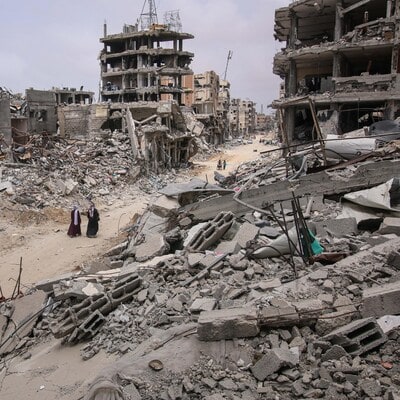The humanitarian need in southern Gaza increased along with a drop in aid flow.
In order to facilitate the delivery of larger supplies of humanitarian aid, the Israeli military declared on Sunday that it would be pausing its attack in the southern Gaza Strip.
According to the army, the standstill will take place in the Rafah region at 8 a.m. (0500 GMT, 1 a.m. eastern) and last until 7 p.m. (1600 GMT, noon eastern). It stated that until further notice, the pauses will occur daily.
The purpose of the delay, according to the IDF, is to give assistance vehicles enough time to go to the main entrance point for incoming help—the neighbouring, Israel-controlled Kerem Shalom crossing—and proceed safely to the Salah a-Din highway, a major north-south route, where they may distribute supplies to other areas of Gaza. It stated that the UN and foreign humanitarian organisations were being consulted in order to arrange the stop.
Since Israeli ground forces entered Rafah in early May, there has been a backlog at the crossing.
Gaza is experiencing a humanitarian crisis as a result of Israel’s eight-month military campaign against the Islamist Hamas group; the UN has reported widespread hunger and hundreds of thousands of people at risk of starvation. The world community has pushed Israel to take further action to alleviate the situation.
According to data from the UN humanitarian agency, or OCHA, the UN received an average of 68 trucks of aid every day between May 6 and June 6. That was significantly less than the 500 trucks per day that relief organisations claim are required, and it was down from 168 trucks per day in April.
As the demand for humanitarian help increased, the amount of supplies reaching southern Gaza decreased. Following the invasion, over a million Palestinians—many of whom had previously been displaced—left Rafah and crowded into other areas of central and southern Gaza. The majority currently live in dilapidated tent camps with open sewage in the streets and pits used as latrines.
The Israeli military organisation in charge of distributing aid in Gaza, COGAT, claims that vehicle entry is unrestricted. According to the report, between May 2 and June 13, over 8,600 trucks of all types—both commercial and humanitarian—entered Gaza across all borders, or 201 every day on average. However, most of that aid has not yet arrived at its intended location and is piled up at the crossings.
According to COGAT spokesman Shimon Freedman, the UN was at responsibility for its cargo piling up on the Gaza side of Kerem Shalom. He claimed that the agencies still needed to address basic logistical issues, chief among them being a shortage of trucks.
The UN refutes these accusations. It states that UN vehicles within Gaza frequently find it too risky to proceed to Kerem Shalom, which is directly adjacent to Israel’s border, because of the conflict between Israel and Hamas.
Additionally, it states that the Israeli military’s requirement for authorization for drivers to enter the location has hampered the speed of delivery. Israel claims this system was put in place for the safety of the drivers. In several instances, aid trucks travelling through Gaza have also been robbed by crowds as a result of a lack of security.
By giving vehicles a daily 11-hour window to enter and exit the border without interruption, the new setup attempts to lessen the need for delivery coordination.
It was not immediately apparent if the army would guard the relief vehicles as they travel along the route.

